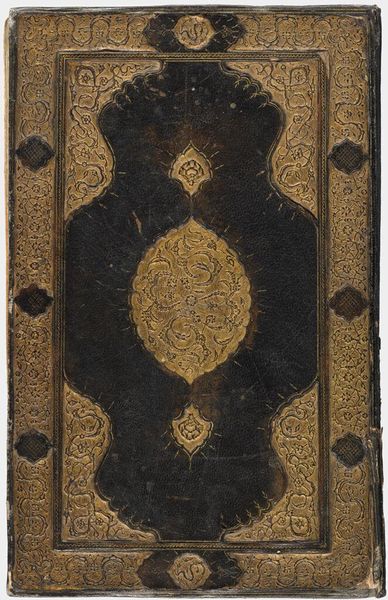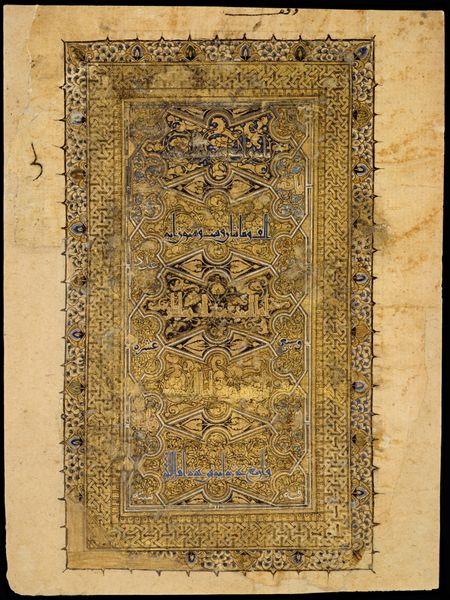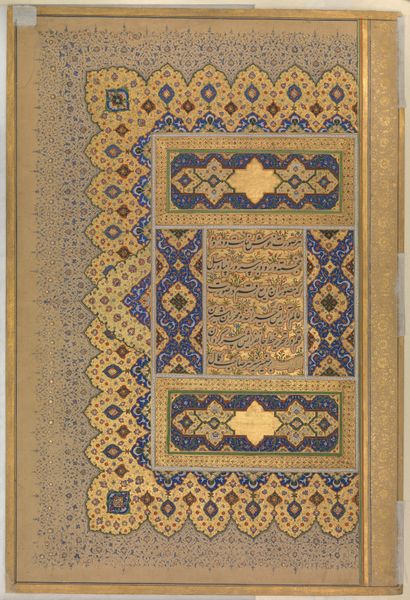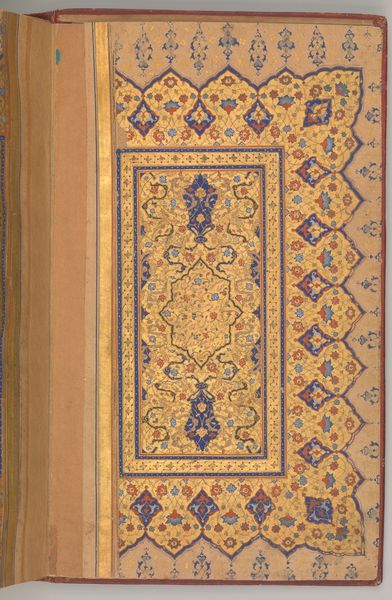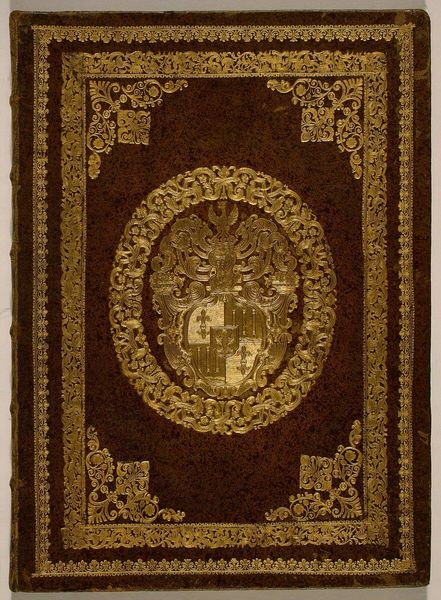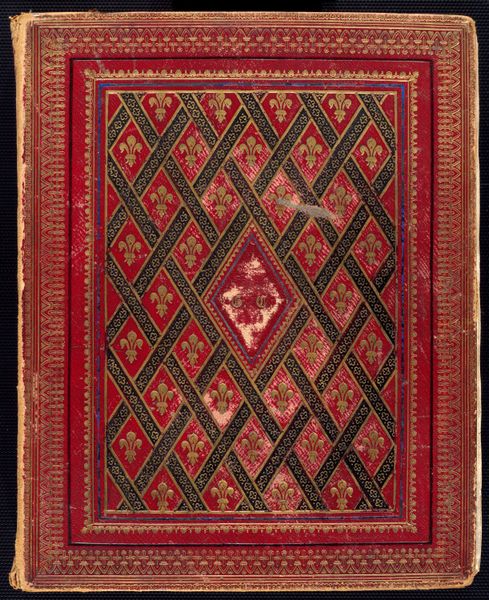
Binding and Text-Block for the Mantiq al-Tayr (Language of the Birds) 1575 - 1625
0:00
0:00
mixed-media, gold, textile
#
mixed-media
#
gold
#
textile
#
geometric pattern
#
geometric
#
pattern repetition
#
islamic-art
#
decorative-art
#
calligraphy
Dimensions: H. 13 (33 cm) W. 8 1/2 in. (21.6 cm)
Copyright: Public Domain
Editor: Here we have the “Binding and Text-Block for the Mantiq al-Tayr (Language of the Birds)”, made sometime between 1575 and 1625. It's attributed to Farid al-Din `Attar and uses mixed media and gold, even textiles. It feels so intricately designed and purposeful. What layers are at play here, and what am I not seeing? Curator: This isn't just a pretty object; it’s a testament to cultural preservation and knowledge dissemination within a specific historical context. The bookbinding itself elevates the text to something sacred. Have you considered how the geometric patterns and calligraphy act as a visual language, speaking to those within the culture even before the text is read? Editor: I hadn't thought about it that way. It's like the cover is preparing you for what's inside, creating a sense of anticipation. And that intricate design seems incredibly time-consuming, implying a high value was placed on the book’s contents. Curator: Precisely. In a time where access to knowledge was restricted, illuminated manuscripts like this were potent symbols of power and spiritual enlightenment. The materials themselves, the gold and fine textiles, represent wealth and patronage. But it also speaks to the artistic traditions in manuscript creation and binding - traditions that might marginalize certain groups of artisans. How might those systems of patronage have shaped whose stories got told? Editor: So it’s not just about the beauty; it’s about power, access, and who controlled the narrative. Thinking about the unseen labour and social structures really changes how I see the artwork. Curator: Exactly. And that's why engaging with the art of the past necessitates understanding its relationship to the present, to critique not just the aesthetics but the politics of representation and legacy. Editor: This makes me see decorative arts in a whole new light – far from mere ornamentation. Thanks! Curator: Indeed, it holds so much value as a cultural record, and its impact on subsequent artistic movements is undeniable. I learned so much today too.
Comments
No comments
Be the first to comment and join the conversation on the ultimate creative platform.
